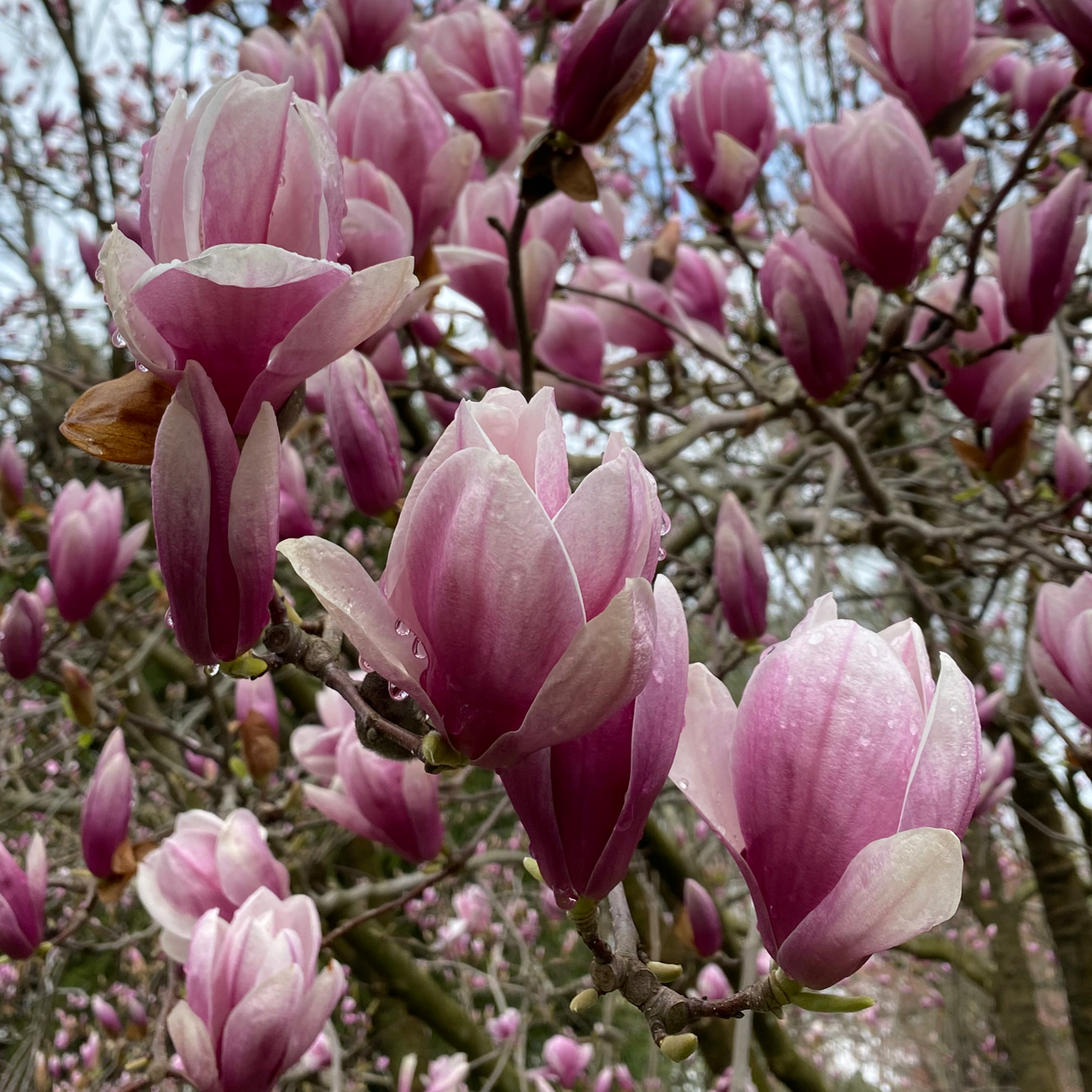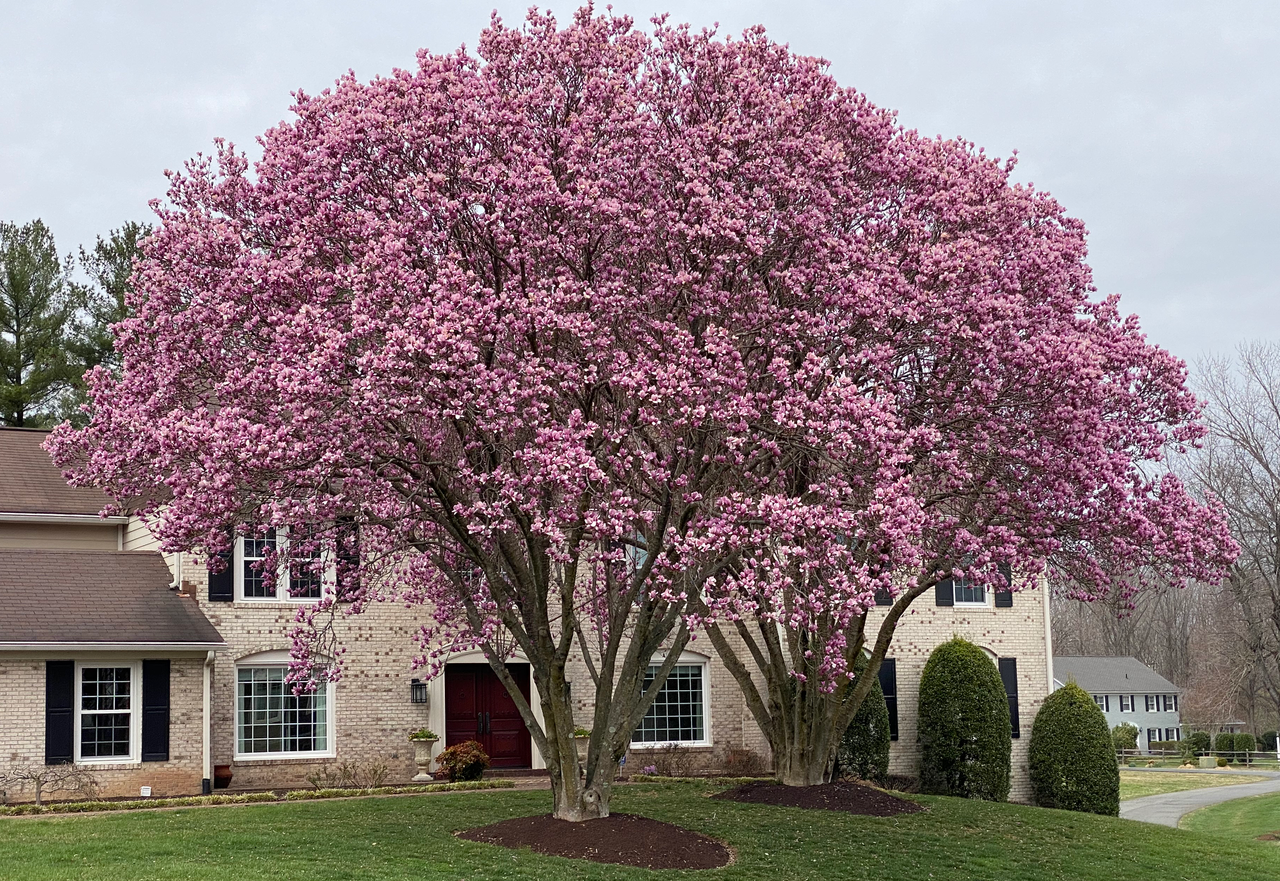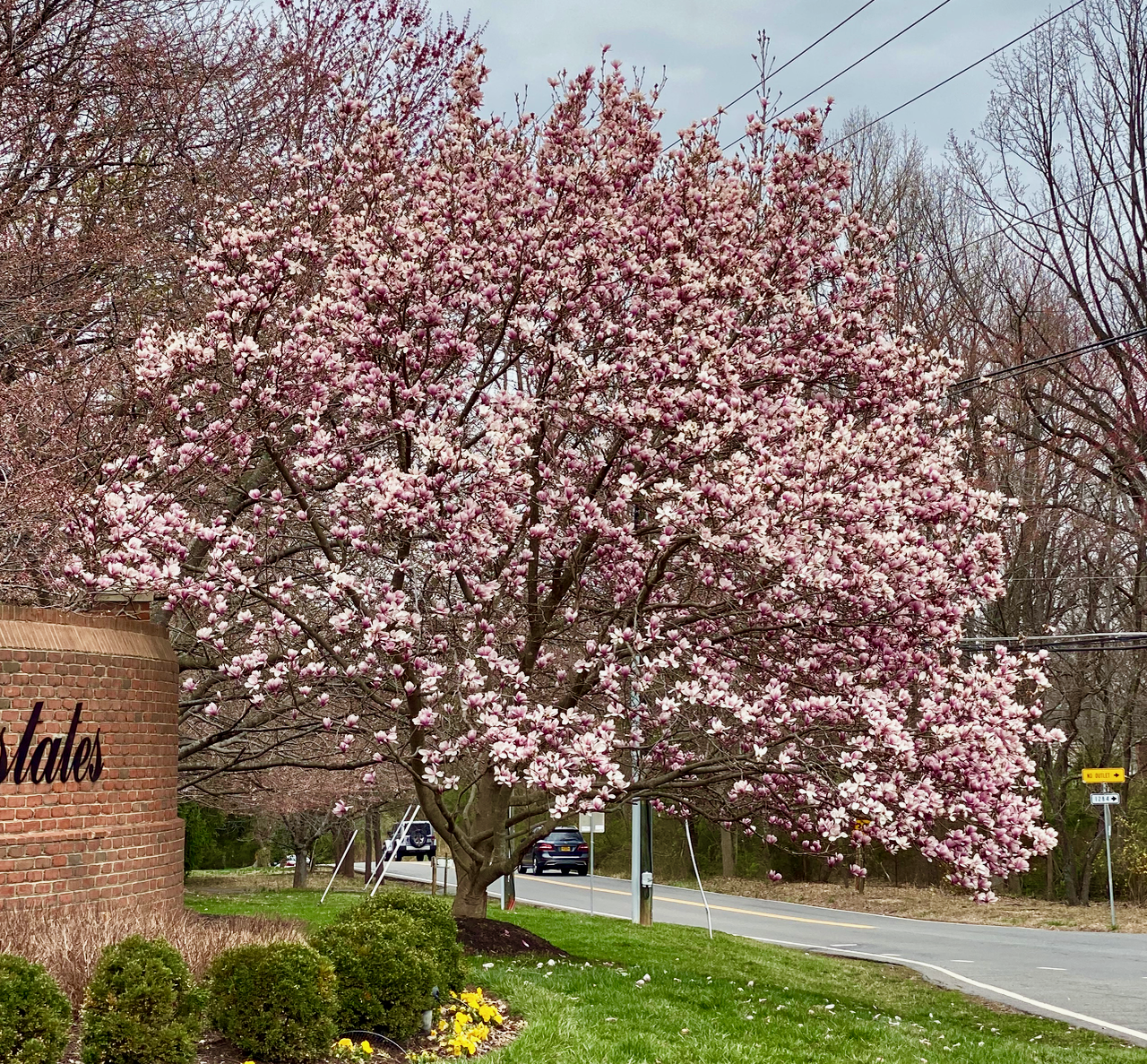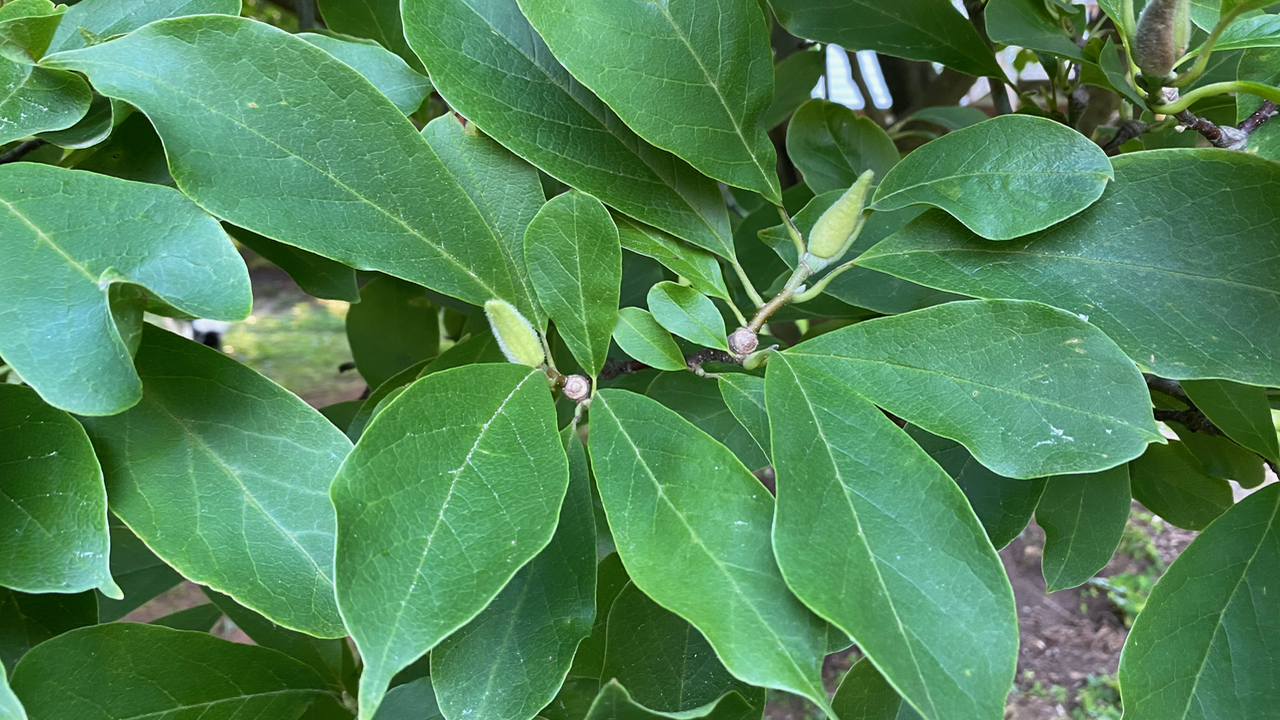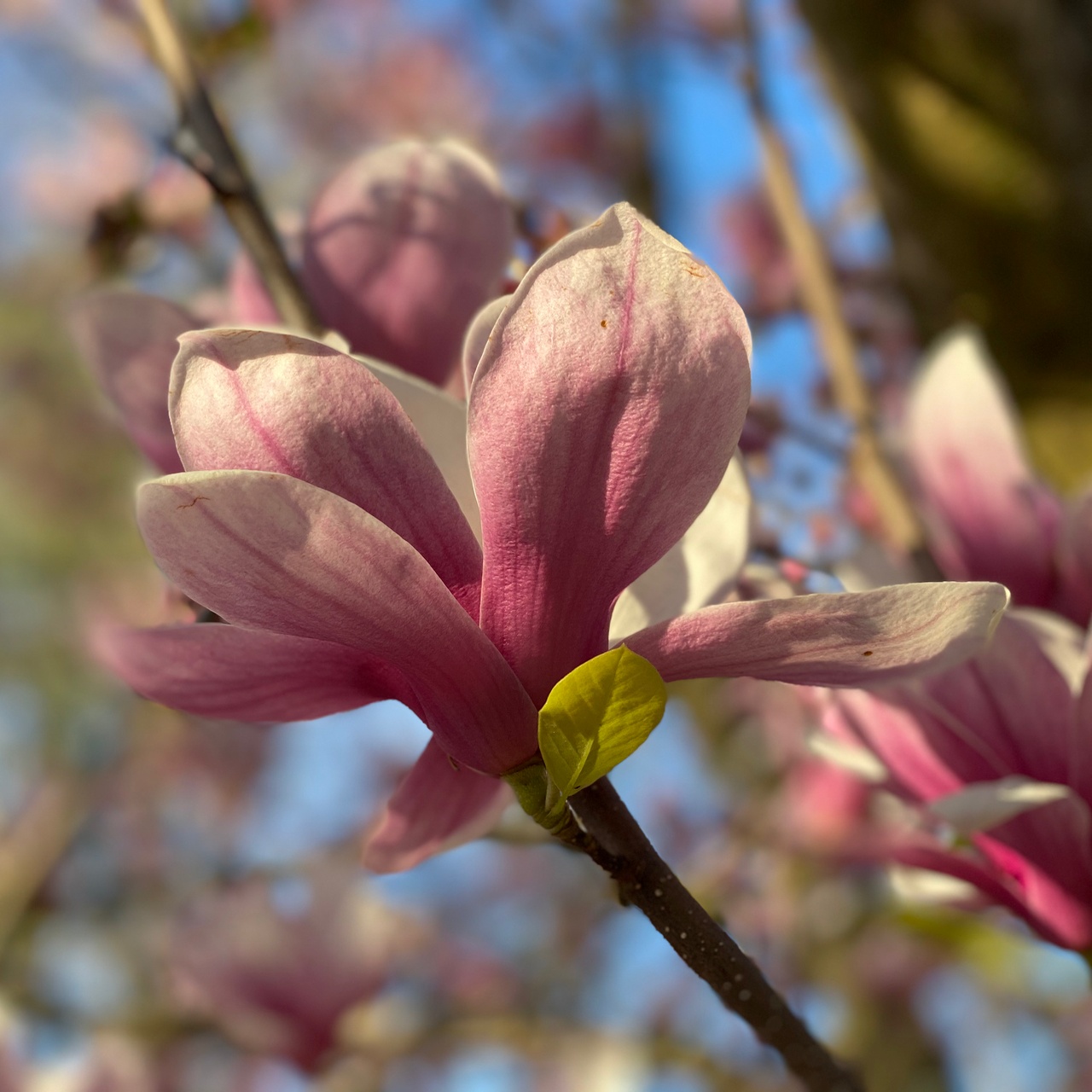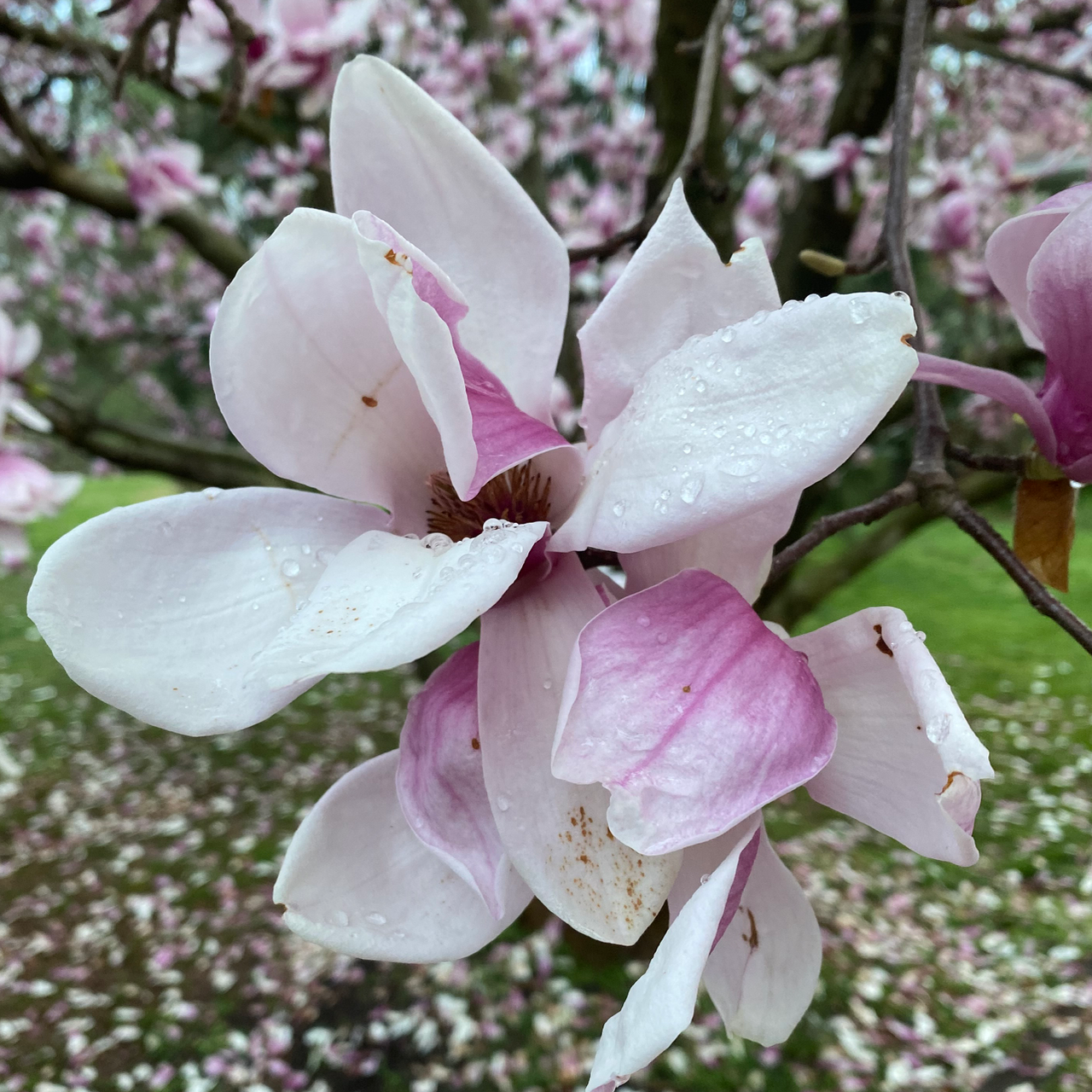Early blooming trees are always welcome after a long winter. The Saucer Magnolia is an early bloomer in Virginia. It produces numerous showy, white flowers with pink and purple accents. This tree is actually a hybrid. In the early 1800s, a Frenchman crossed Magnolia denudate with M. lilliflora and Magnolia x soulangeana was born. Obviously, it is not native to the US, however it is not invasive. It is a lovely ornamental tree.
Is the Saucer Magnolia Right for Your Landscaping?
Saucer Magnolias are a multi-stem small to medium size tree. Although, references state that the crown is not uniform, these specimens have uniform crowns. Crowns typically are round with a slight arching effect.
Choose a space that can accommodate a tree 20-30’ tall with a similar sized spread.
It grows in a variety of soil types; however, it likes acidic soil.
Pick a spot that gets full sun or at least 6 hours of direct sunlight per day.
Usually it requires minimal maintenance.
Characteristic Leaves and Bark
Lovely, medium green simple leaves are alternate on the stem. The leaf margin, or in other words, the leaf edge undulates. This means that it is not straight, but it is irregularly, subtly, wavy. Small veins emerge laterally from a central vein. Leaves vary in length from 4-6”. They are considered obovate or oblong. In case you are wondering, obovate is similar to oblong except the leaf is not uniformly wide. It is narrower at the base than at the tip.
The bark is silver and smooth. This is relevant in the winter when the leaves are gone. The shape of the tree and branches provides visual interest all year.
Saucer Magnolia Flowers
In my opinion, the flowers are the star of this tree. These trees flower early. This is the one negative. Some years, the flowers are burned by a late frost. However, if they don’t get ruined by the frost, they are amazing! Large white flowers with major pink and purple highlights sit on bare branches. Flowers are relatively simple with several petals and a simple center. The petals are relatively thick and almost leathery. They are similar in texture to their cousin the Southern Magnolia. They hold their shape nicely. Supposedly the flowers are cup or saucer shaped. You can decide that yourself from the photos.
References,
First, this is a nice fact sheet produced by the Department or Agriculture Forest Service.
Second, the Morton Arboretum is another excellent resource.
Finally, if you would like to purchase one of these trees, try Merrifield Garden Center.
